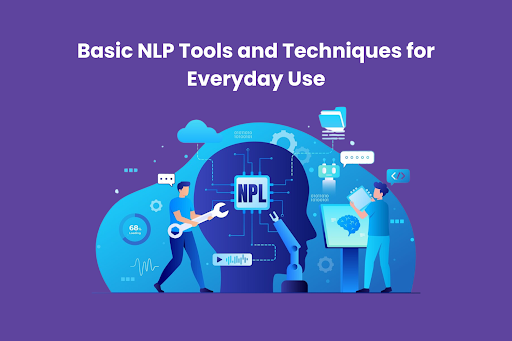Welcome to the world of Natural Language Processing (NLP), where technological wizardry and the complexities of language collide. Knowing the foundations of NLP is not only for tech enthusiasts in this digital age; it’s a skill that may improve your productivity and daily interactions. Whether exploring NLP for personal growth or considering enrolling in NLP Certification Courses, this blog guides you to the fundamentals.
In this blog, we provide an NLP for Dummies overview of the leading NLP techniques and tools as we seek to demystify the fundamentals of NLP for your daily usage.
Table of Contents
Text Tokenisation
Text tokenisation is the first step toward NLP. Tokenisation is the process of dissecting a statement into its constituent words or phrases, thus unravelling its layers. This procedure is essential for anybody entering the language processing field since it establishes the groundwork for several NLP applications.
Sentiment Analysis
Ever wonder how companies use comments on social media or online reviews to determine how satisfied their customers are? The key lies in sentiment analysis, a potent NLP method. Businesses may modify tactics, better consumer experiences, and improve goods by analysing the emotional tone of text data. Gaining proficiency in sentiment analysis is essential for anybody considering NLP certification courses since it offers both beginners and specialists a practical way to use NLP.
Named Entity Recognition
Entities are the stars in the linguistic universe. These linguistic luminaries may be identified and categorised using NLP’s Named Entity Recognition (NER) tool, regardless of the recognised entity—a person, place, or organisation. This method is essential for obtaining useful information from large datasets, making it a necessary skill for experts.
Part-of-Speech Tagging
In the eyes of language fans and grammar enthusiasts, the unsung hero of NLP is part-of-speech tagging. This tool gives every word in a phrase a grammatical category, such as noun, verb, or adjective. Apart from helping with grammatical accuracy, part-of-speech tagging is an essential feature of more complex NLP applications, assisting with meaning and context comprehension.
Word Embeddings
Word embeddings in NLP function as a word symphony, harmonising words according to context. Using this method, words are converted into vectors that represent their semantic associations. NLP certification candidates often study word embeddings in great detail, realising how these vectors enable the comprehension of context and subtle meanings in language.
Text Classification
Information classification is critical for textual data. Machines can classify text into predetermined categories or labels thanks to NLP’s text classification algorithms. Text classification is a flexible technique with uses that go far beyond natural language processing (NLP), from email spam filters to sentiment-based social media categorisations.
Named Entity Linking
Named Entity Linking (NEL), which builds on Named Entity Recognition’s base, advances the game. NEL gives the data a more profound context by establishing connections between recognised entities and external databases. Gaining a better grasp of information retrieval and knowledge improvement is possible via mastering NEL.
Language Models
We must have an eye on the future while we navigate the NLP tools and methodologies. Language models like GPT-4 push natural language comprehension to its limits. These complex models, which represent the pinnacle of NLP development, demonstrate how machine learning can understand and produce writing similar to a person’s. A glimpse into the potential of language may be obtained by comprehending the development of language models.
Application in Everyday Life
The real-world uses of NLP in our everyday lives are found beyond complicated formulas and intricate details. NLP quietly affects how we interact with technology, from voice-activated assistants that understand natural language instructions to the predictive text on your smartphone. Even though NLP could first appear intimidating, knowing its practical applications helps us appreciate its importance and how it might improve our daily interactions with the digital world.
The sense that NLP is a concept for tech enthusiasts and a dynamic force woven into our tech-driven routines is reinforced by investigating these implementations, which provide a concrete link to the theoretical features we’ve examined.
Conclusion
As we come to the close of exploring the foundational tools and methods of natural language processing, it is clear that the applications of NLP go far beyond the domain of computer enthusiasts and specialists. These fundamental methods and instruments are the cornerstones of several applications, regardless of whether you’re considering taking NLP certification classes or just learning about NLP. NLP encourages everyone to investigate, study, and become experts in comprehending and processing language in the digital era. Applications range from improving customer experiences via sentiment analysis to navigating the complexities of language through text tokenisation.
Therefore, remember that the trip starts with comprehending the fundamentals of NLP, regardless of whether you’re just getting started or thinking about delving further. You now own the ability to understand the language, accept it, delve into it, and allow the words to reveal themselves.





















